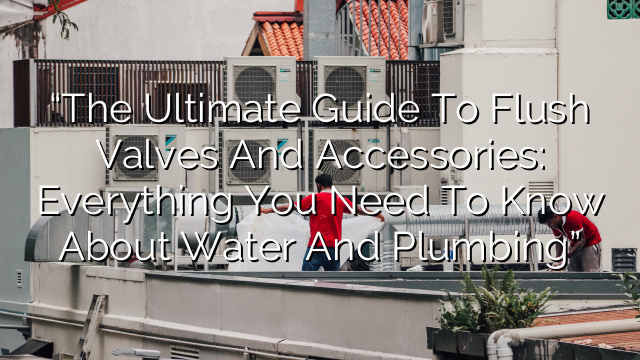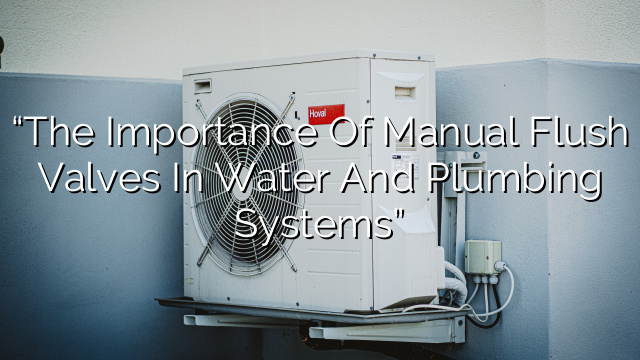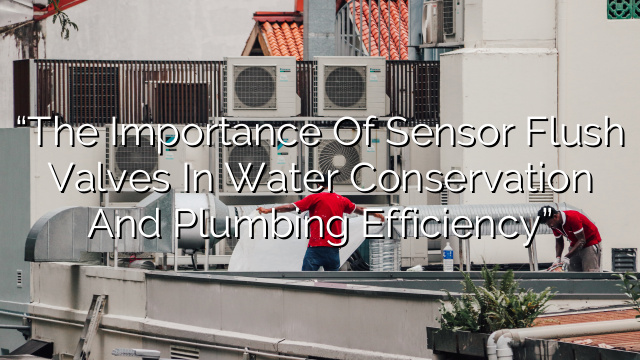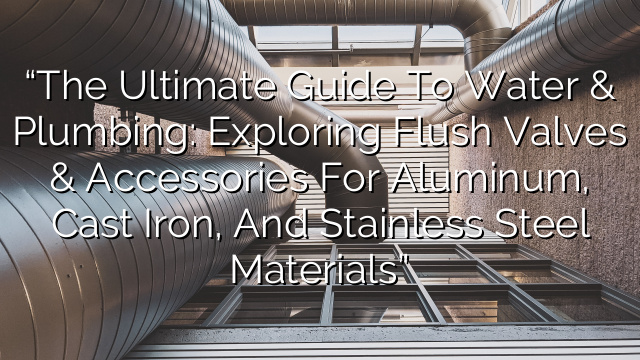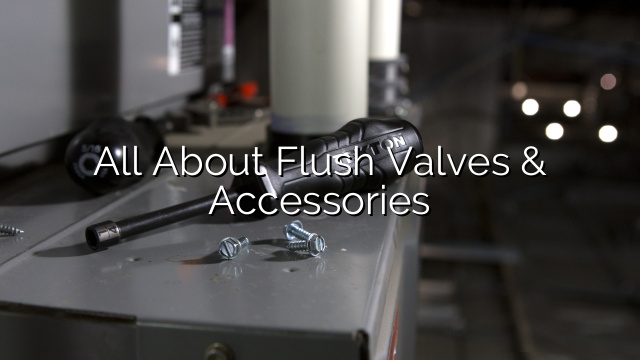Introduction
Flush valves and accessories are an essential part of any plumbing system. They help to regulate the flow of water and ensure that toilets and other fixtures are functioning properly. In this ultimate guide, we will explore everything you need to know about flush valves and accessories in relation to water and plumbing.
What are Flush Valves and Accessories?
Flush valves are mechanisms used to control the release of water in a flush toilet. When the handle is pushed, it opens the valve and allows water to flow into the bowl, effectively flushing away waste. Flush valve accessories, on the other hand, are additional components that can enhance the functionality or convenience of a flush valve system.
The Importance of Flush Valves and Accessories in Water and Plumbing
Flush valves and accessories play a crucial role in ensuring proper sanitation and water conservation. By allowing for efficient flushing, they help to maintain cleanliness in toilets and prevent the spread of diseases. Moreover, flush valves with water-saving features can significantly reduce water consumption, which is especially important in water-scarce areas or during droughts.
Types of Flush Valves
- Manual Flush Valves: These are the traditional flush valves where the user manually operates the flushing mechanism by pushing a handle or button.
- Automatic Flush Valves: These flush valves use sensors to detect when a user has finished using the toilet, triggering an automatic flush.
- Electronic Flush Valves: Similar to automatic flush valves, these valves use sensors, but they also offer additional features such as adjustable flush duration and automatic maintenance alerts.
Common Flush Valve Accessories
- Flush Valve Handle: This is the part of the flush valve that the user interacts with to initiate the flushing process.
- Flush Valve Flapper: The flapper is a rubber seal that covers the flush valve opening and prevents water from flowing into the toilet bowl until the flushing mechanism is activated.
- Flush Valve Diaphragm: Found in some flush valves, the diaphragm is a flexible membrane that helps regulate water flow.
- Overflow Tube: This tube prevents the toilet from overflowing by directing excess water into the drainpipe.
Choosing the Right Flush Valve and Accessories
When selecting a flush valve and accessories, several factors should be considered:
- Flush Volume: Different flush valves have different flow rates, expressed in gallons per flush. It is essential to choose a flush valve that aligns with your water conservation goals and local regulations.
- Compatibility: Ensure that the flush valve and accessories are compatible with your toilet model. Check the manufacturer’s specifications or consult a professional if necessary.
- Durability: Look for flush valves and accessories made with high-quality materials to ensure longevity and minimize the need for frequent replacements.
- Water Efficiency: Consider opting for water-saving flush valve accessories, such as dual-flush mechanisms or adjustable flush durations, to reduce water consumption without compromising functionality.
Installation and Maintenance
Proper installation and regular maintenance are vital for the optimal performance of flush valves and accessories. If you’re not confident in your plumbing skills, it’s recommended to hire a professional plumber for installation. As for maintenance, regular cleaning of the flush valve components, such as the flapper and overflow tube, can prevent clogs and prolong the lifespan of the system.
Common Problems and Troubleshooting
Despite their importance, flush valves and accessories can experience issues that affect their functionality. Here are some common problems and troubleshooting tips:
- Weak Flush: If the flush is weak, it could be due to a clog in the toilet or a malfunctioning flush valve. Clean the toilet thoroughly, including the flush valve and associated components, to eliminate any obstructions. If the problem persists, consider replacing the flush valve.
- Continuous Running: A flush valve that continues to release water even after flushing can lead to water waste and higher bills. Check the flapper for damage or misalignment. Adjust or replace the flapper if necessary.
- Water Leakage: Water leakage around the base of the toilet or from the flush valve can indicate a faulty flush valve seal or improper installation. Inspect the seal and ensure that all connections are tight. If the issue persists, consult a plumber.
FAQs
Q: How often should flush valves and accessories be replaced?
A: Ideally, flush valves and accessories should be replaced every 5 to 10 years or as soon as issues start to arise. Regular maintenance and cleaning can help prolong their lifespan.
Q: Can I install flush valves and accessories myself?
A: While it is possible to install flush valves and accessories as a DIY project, it is recommended to hire a professional plumber, especially if you are unfamiliar with plumbing systems. Professional installation can ensure proper functioning and prevent potential leaks or damage.
Q: Are there any eco-friendly flush valves and accessories available?
A: Yes, many flush valves and accessories now come with eco-friendly features such as water-saving mechanisms and adjustable flush durations. These options can significantly reduce water consumption and promote sustainability.
Q: Can flush valves and accessories be used in commercial settings?
A: Absolutely! Flush valves and accessories are commonly used in commercial settings such as office buildings, restaurants, and hotels. They are designed to handle high volumes of traffic and guarantee efficient flushing and water conservation.
Conclusion
Flush valves and accessories are integral to the proper functioning of toilets and other plumbing fixtures. By understanding the different types of flush valves, selecting the right accessories, and investing in regular maintenance, you can ensure optimal performance, water conservation, and overall sanitation. Remember to consult a professional plumber for installation or troubleshooting assistance when necessary. With the knowledge gained from this ultimate guide, you can confidently navigate the world of flush valves and accessories in the realm of water and plumbing.

